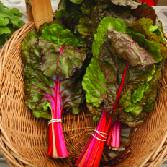-
CATEGORY ::
- All Seeds /
- All Cover Crop Seed








Daikon Radish Seed
LATIN NAME
Raphanus sativus
SEASON
Annual
ENVIRONMENT
Full sun to partial shade
USDA ZONES
2 - 11
SOWING TEMP
50F - 75F
WHEN TO PLANT
Late summer to early fall
PLANTING DEPTH
1/2 inch
SOWING METHOD
Broadcast or drill
SEEDING RATE
10 - 15 lbs per acre
PLANT CHARACTERISTICS
Fast growing, root crop
ESTABLISHMENT RATE
Fast
MOISTURE REQUIREMENTS
Moderate
CROP HEIGHT
20 inches
COLD TOLERANCE
Excellent
HEAT TOLERANCE
Poor
SHADE TOLERANCE
Fair
DAYS TO MATURITY
50 - 70 days
IDEAL FOR
Cover crop, soil improvement, soil aeration, wildlife forage
AVERAGE GERMINATION
3 - 10 days
LATIN NAME
Brassica rapa
SEASON
Annual
ENVIRONMENT
Full sun to partial shade
USDA ZONES
2 - 9
SOWING TEMP
45F+
WHEN TO PLANT
5 - 7 weeks before first frost in fall
PLANTING DEPTH
1/2 inch
SOWING METHOD
Broadcast or drill
SEEDING RATE
10 - 15 lbs per acre
PLANT CHARACTERISTICS
Easy establishment, winter hardiness
ESTABLISHMENT RATE
Faste
MOISTURE REQUIREMENTS
Moderate
CROP HEIGHT
24 inches
COLD TOLERANCE
Excellent
HEAT TOLERANCE
Fair
SHADE TOLERANCE
Fair
DAYS TO MATURITY
55 days
IDEAL FOR
Wildlife food plots, cover crop, forage
AVERAGE GERMINATION
7 - 14 days
LATIN NAME
Brassica oleracea
SEASON
Annual
ENVIRONMENT
Full sun
USDA ZONES
3 - 10
SOWING TEMP
45F+
WHEN TO PLANT
5 - 7 weeks before frost in fall
PLANTING DEPTH
1/4 inch
SOWING METHOD
Broadcast or drill
SEEDING RATE
6 - 10 lbs per acre
PLANT CHARACTERISTICS
Excellent regrowth, winter hardiness, erosion control
ESTABLISHMENT RATE
Fast
MOISTURE REQUIREMENTS
Moderate
CROP HEIGHT
36 inches
COLD TOLERANCE
Excellent
HEAT TOLERANCE
Fair
SHADE TOLERANCE
Good
DAYS TO MATURITY
55 - 75 days
IDEAL FOR
Erosion control, wildlife food plots, grazing, cover crop
AVERAGE GERMINATION
3 - 14 days
LATIN NAME
Crotalaria juncea L.
SEASON
Annual
ENVIRONMENT
Full sun
USDA ZONES
8 - 11
SOWING TEMP
65F+
WHEN TO PLANT
Spring to early summer
PLANTING DEPTH
1/4 - 1 inch
SOWING METHOD
Broadcast or drill
SEEDING RATE
25 - 50 lbs per acre
PLANT CHARACTERISTICS
High biomass, nitrogen fixator
ESTABLISHMENT RATE
Fast
MOISTURE REQUIREMENTS
Moderate
CROP HEIGHT
36 - 108 inches
COLD TOLERANCE
Poor
HEAT TOLERANCE
Excellent
SHADE TOLERANCE
Poor
DAYS TO MATURITY
60 - 90 days
IDEAL FOR
Cover crop, soil improvement, green manure, forage, fiber production
AVERAGE GERMINATION
3 - 7 days
LATIN NAME
Glycine max
SEASON
Annual
ENVIRONMENT
Full sun
USDA ZONES
2 - 10
SOWING TEMP
55F - 77F
WHEN TO PLANT
Spring to early summer
PLANTING DEPTH
3/4 - 1 1/2 inches
SOWING METHOD
Broadcast or drill
SEEDING RATE
90 - 120 lbs per acre
PLANT CHARACTERISTICS
Nitrogen fixator, easy establishment, high yields, oil
ESTABLISHMENT RATE
Fast
MOISTURE REQUIREMENTS
High
CROP HEIGHT
20 - 50 inches
COLD TOLERANCE
Poor
HEAT TOLERANCE
Good
SHADE TOLERANCE
Poor
DAYS TO MATURITY
80 - 120 days
IDEAL FOR
Livestock, cover crop, animal feed,
AVERAGE GERMINATION
5 - 10 days
LATIN NAME
Vigna unguiculata
SEASON
Annual
ENVIRONMENT
Full sun to partial shade
USDA ZONES
5 - 10
SOWING TEMP
70F - 95F
WHEN TO PLANT
After danger of frost
PLANTING DEPTH
1/2 - 1 inch
SOWING METHOD
Drill
SEEDING RATE
30 - 90 lbs per acre
IDEAL FOR
Erosion control, nitrogen fixation, food plots
PLANT CHARACTERISTICS
Fast growing, high protein
ESTABLISHMENT RATE
Fast
MOISTURE REQUIREMENTS
Moderate - high
CROP HEIGHT
24 - 36 inches
COLD TOLERANCE
Poor
HEAT TOLERANCE
Excellent
SHADE TOLERANCE
Moderate
DAYS TO MATURITY
80 - 90 days
AVERAGE GERMINATION
7 - 10 days
LATIN NAME
Vicia faba
SEASON
Annual
ENVIRONMENT
Full sun
USDA ZONES
2 - 10
SOWING TEMP
41F+
WHEN TO PLANT
After danger of frost
PLANTING DEPTH
1 - 2 inches
SOWING METHOD
Drill
SEEDING RATE
1 - 2 lbs per 1,000 square feet
IDEAL FOR
Cover crops, soil enrichment, forage quality
PLANT CHARACTERISTICS
Nitrogen fixator, high yields, high protein, high biomass
ESTABLISHMENT RATE
Fast
MOISTURE REQUIREMENTS
Moderate - high
CROP HEIGHT
48 inches
COLD TOLERANCE
Fair - good
HEAT TOLERANCE
Moderate
SHADE TOLERANCE
Fair - good
DAYS TO MATURITY
80 - 100 days
AVERAGE GERMINATION
7 - 14 days
About...
A deep rooted forage radish used as a cover crop. The deep taproot can help break through tough, compacted soil, improve water infilatration, suppress weeds, reduce pests, and stores nitrogen.MORE COVER CROP OPTIONS

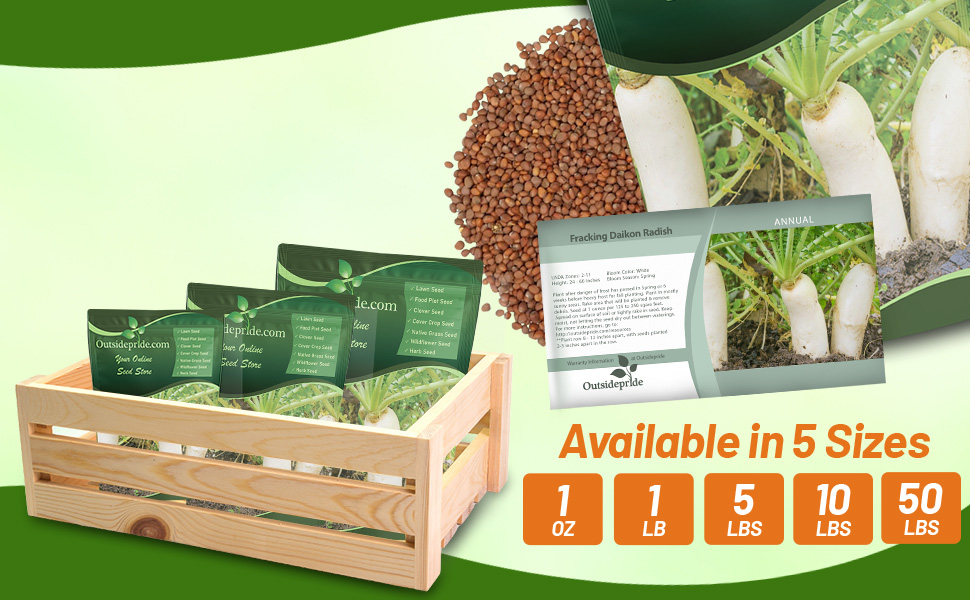
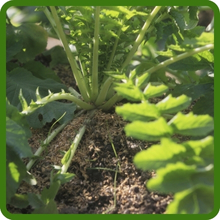
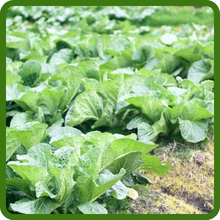

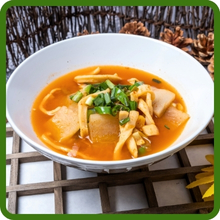
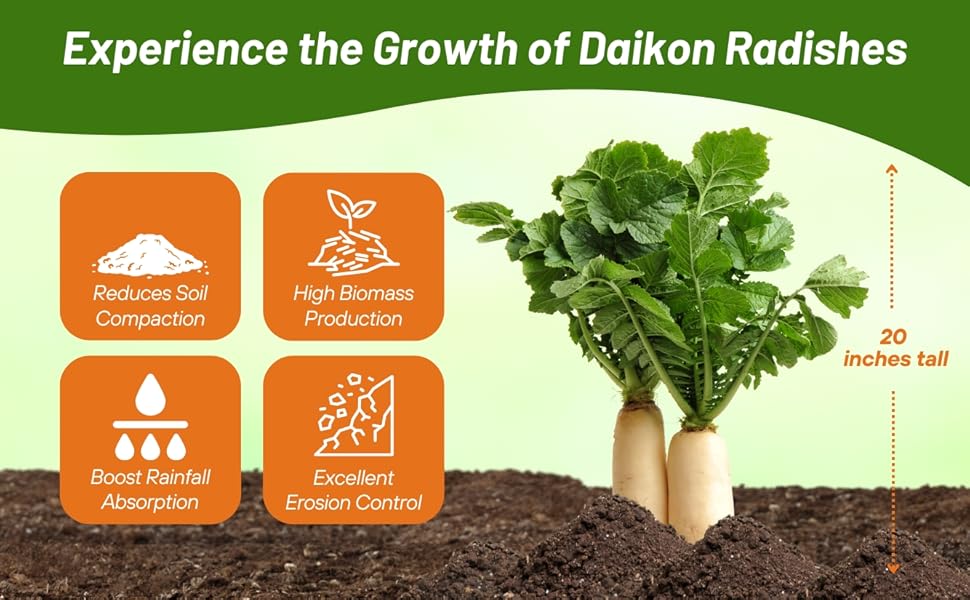

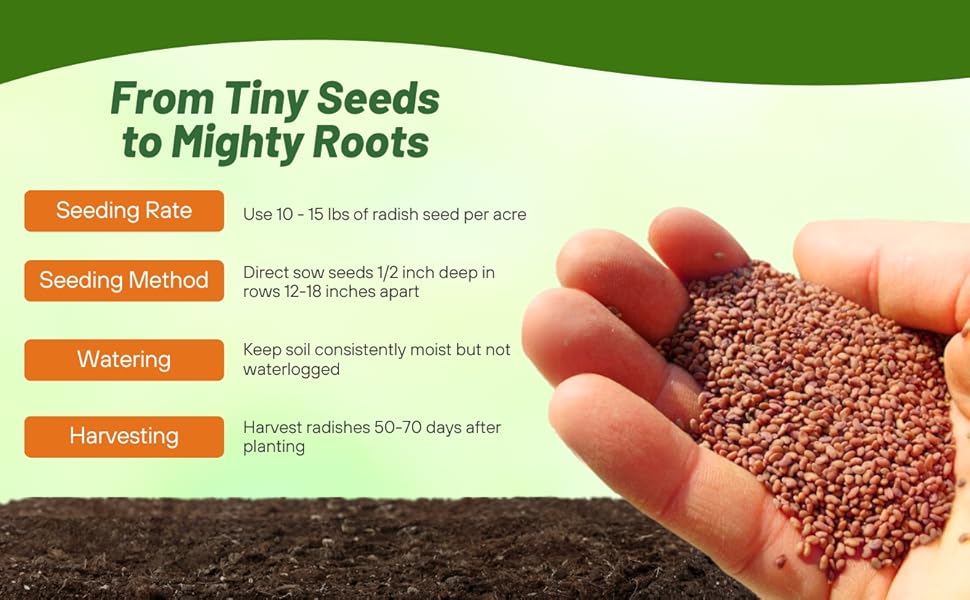
Fracking Daikon Radish is a deep rooted forage radish that will make an outstanding winter cover crop. The deep taproot of the large rooted plant can help break up the tough, compacted soil, improve water infiltration, suppresses weeds, eliminate pests and stores nitrogen. When planting daikon radish seed as a cover crop, the benefits will be optimized if planted in late summer:
Some people refer to Daikon radish as Oriental radish, Chinese radish, Satsuma radish amd Japanese radish. In fact, Daikon in Japanese means "big root." It is grown around the world, but primarily here in the U.S. Daikon radish seeds are planted as a cover crop to prevent soil compaction, which then allows soil to absorb more rainfall.
Daikon radishes look different than typical garden radishes. They have large, fast growing leaves and a long white root which looks similar to a pale carrot. Daikon can grow up to 20 inches long with a diameter of 4 inches. Their flavor is milder and less peppery than other radishes and can be eaten raw with a crisp and juicy texture. Or, if cooked, the taste is similar to turnip.

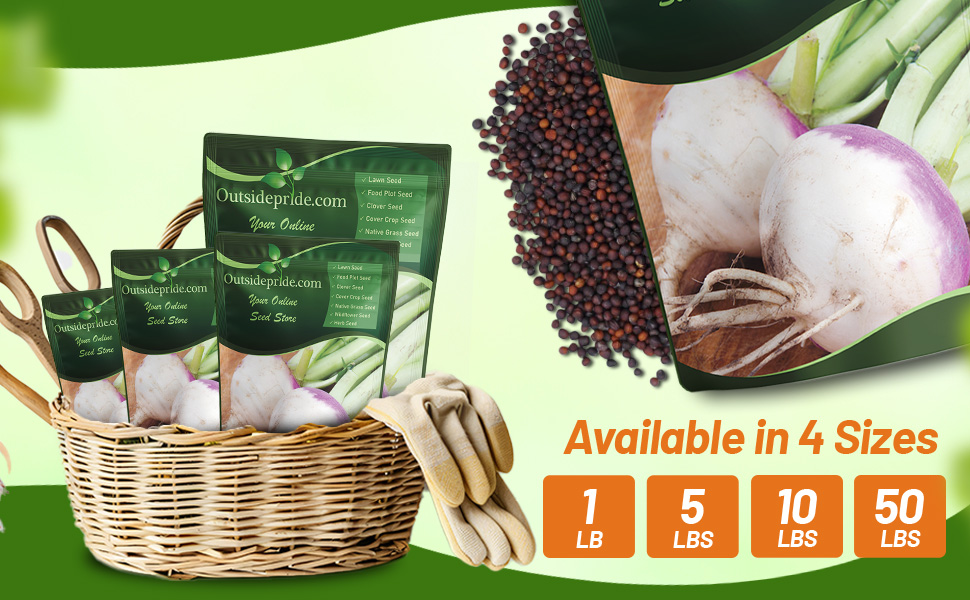

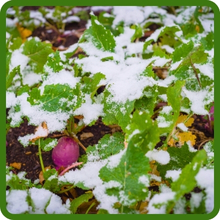
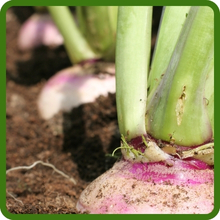
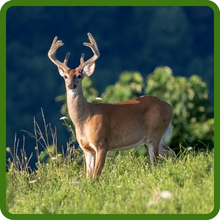
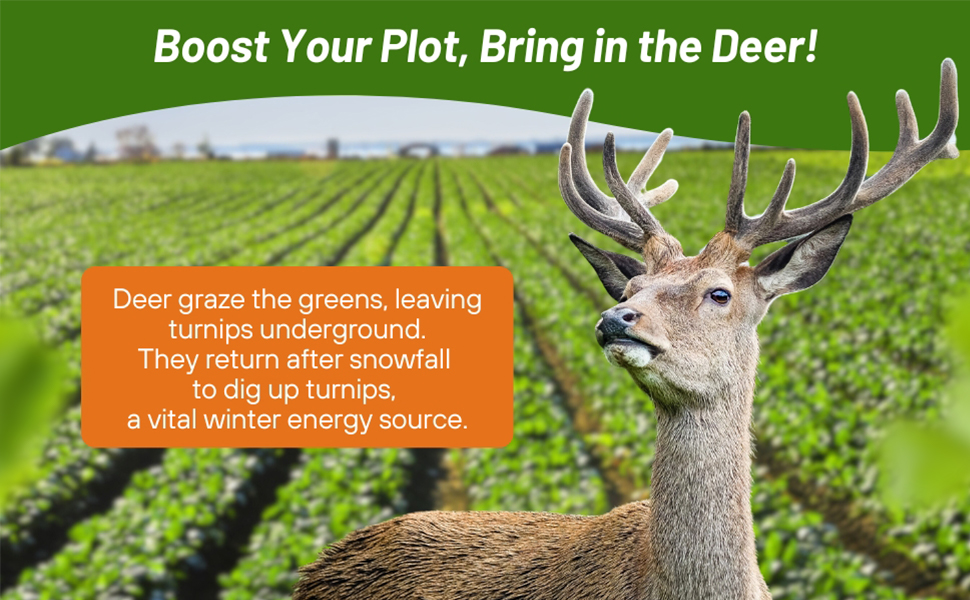
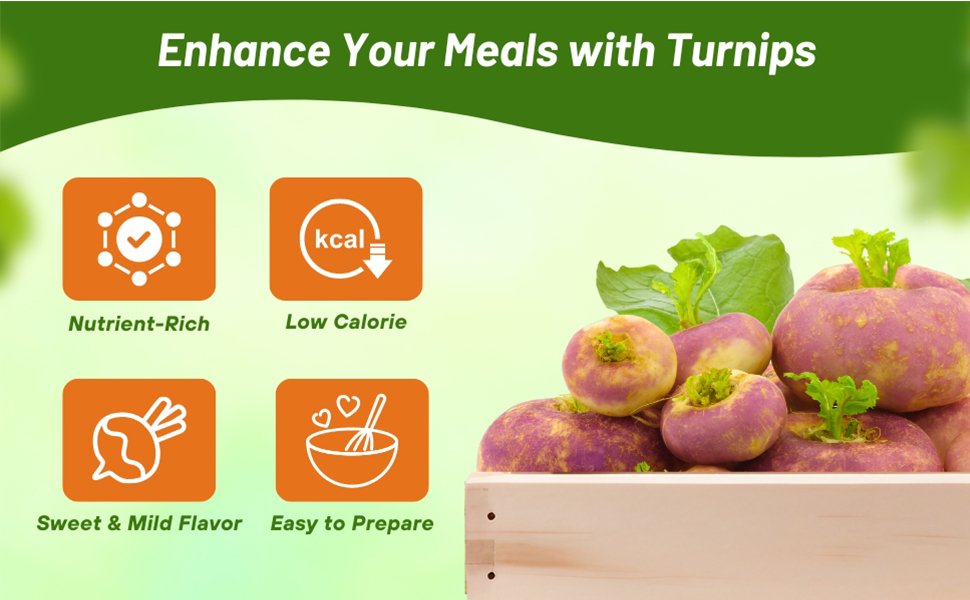
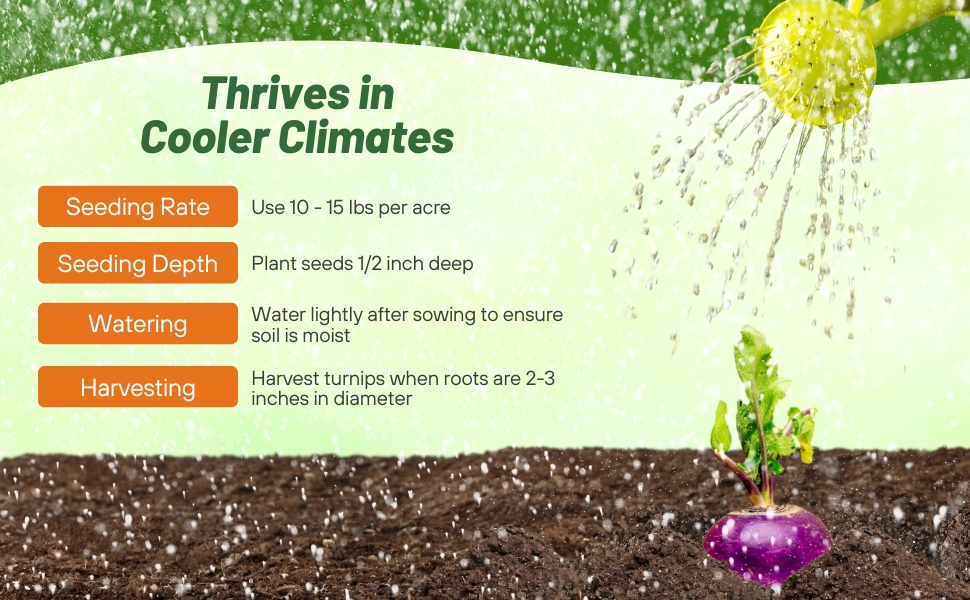
Purple Top Turnip (Brassica Rapa) - An easy to grow plant from purple top turnip seeds used for forage and cover crops. This turnip is white and purple that has smooth, globe roots take about 55 days to reach maturity. This plant has many great uses such as putting nutrients back into the soil as well as providing a food source for wildlife and livestock. They grow rapidly and are an excellent choice for fall grazing livestock and used widespread for deer food plots. This dual-purpose plant produces a large purple top spherical root and leafy foliage that can both be grazed. Because they provide a high-protein and high-energy food source, purple top turnips are one of the most popular food plot plants for whitetail deer as well as a general purpose cover crop.
Smaller size turnips remain sweet and tender and are therefore a desirable food source for deer. Cool temperatures also help enhance the taste of the turnip making them great for hunting season food plots that can be planted in mid to late summer and provide forage into the winter months. Deer will graze on the greens and leave the turnip underground untouched as a sort of food reserve and will return once the greens are gone and even after snow fall and will dig through the snow and dig up and eat the purple top turnip providing an important high energy winter food source. Turnips are an annual plant growing in USDA Zones 2 - 9 and usually reach a height of 24 inches.
















